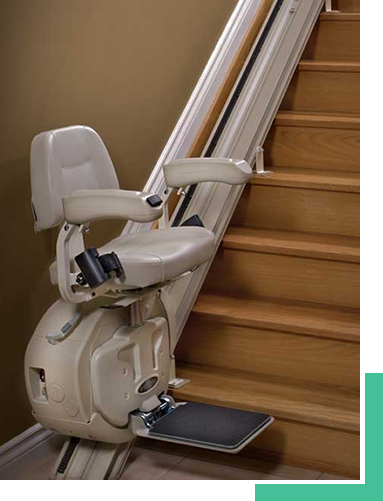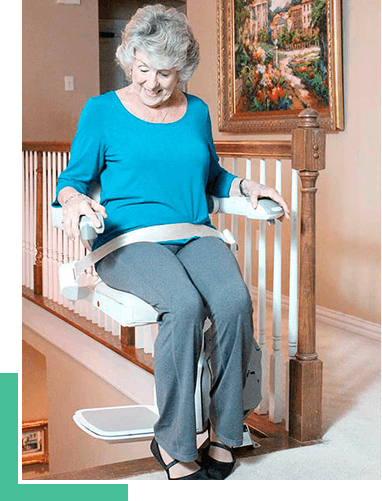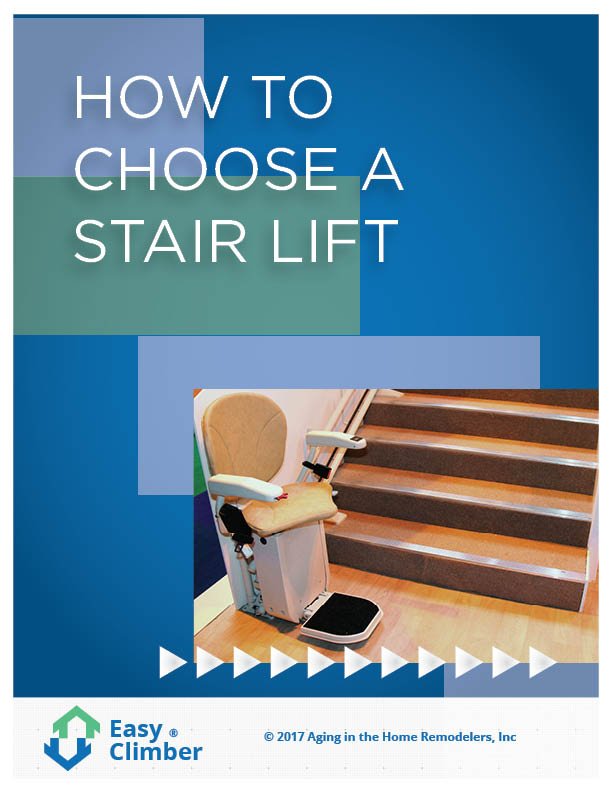HOW
TO CHOOSE
Main Factors to Consider When Choosing a Stair lift
Knowing the variables described below, such as the size of the stairwell, length of service needed, and the stairway shape is vital when choosing a stair lift that will deliver value over the users lifetime.
- Dimensions and House Design Considerations
- The Size and Shape of your Staircase
- The Carriage (Seat)
- Adapting Your Home to a Stairlift
- Physical Conditions
- Budget & Financial Considerations
Dimensions and House Design Considerations
There are several measurements to take on one’s staircase to determine what size stair lift unit to install. The first measurement should be the length of track from the top to the bottom of the steps. The second thing to measure is the height, tread, and width of the steps. Some stair lift companies send their employees to do the measuring themselves.
Heavy-Duty versus Standard Size Lift
The other consideration for sizing is determining whether a standard size or a heavy duty/high weight capacity stair lift will be most suitable. Standard size stair lifts usually hold up to 300 pounds, versus heavy-duty stair lifts which are typically capable of supporting 500-600 pounds.
Size of Stair Lift to Allow for Foot Traffic on Stairwell
If there are other individuals who will be accessing the stairs on foot, the amount of space it takes up will be an added consideration. There are models of stair lifts that fold up compactly to allow plenty of stairwell space for other family members or guests to go up and down the steps.
The Size and Shape of your Staircase
There are two types of staircases, straight and curved. This is one of the biggest considerations when determining which stair lift would be needed. The lift for a straight flight of stairs goes up and down in a straight line. It is not able to turn around curves, bends, or travel across a landing. A curved stair lift is able to navigate corners and reversal of direction in the stairs.
The Carriage (Seat)
The chair portion of a stair lift is generally referred to as the “carriage.”. Consideration should be taken as to the carriage design, such as the height of the seat, manual versus power swivel of the seat, and safety hitches to ensure that the lift won’t start moving until the carriage has been securely locked.
Swivel Seats
A seat that swivels is very important to the safety of the user. The majority of stair lift seats face away from the wall or banister, towards the stairwell. If the seat does not swivel, the user may need to get in and out of the carriage from either the top or bottom stair step. Entry and exit into the carriage from the steps
Chair Height
The height of the chair must be low enough so that the user can sit down and stand up easily.
Seat Belts
Most, if not all, stair lift carriages come equipped with a seat belt as a safety precaution. It is important for the user to fasten the seat belt anytime the stair lift is being used.
WANT TO SEE MORE?
Unlock all the below content by downloading the free guide.
The Carriage: Swivel seats, folding and unfolding the chair
Adapting Your Home to a Stair Lift Guide
Stair Lift Glossary of Terms
Stair lift operating systems and power source
Physical conditions that require a Stair lift
Budget, financial considerations, and financial help



